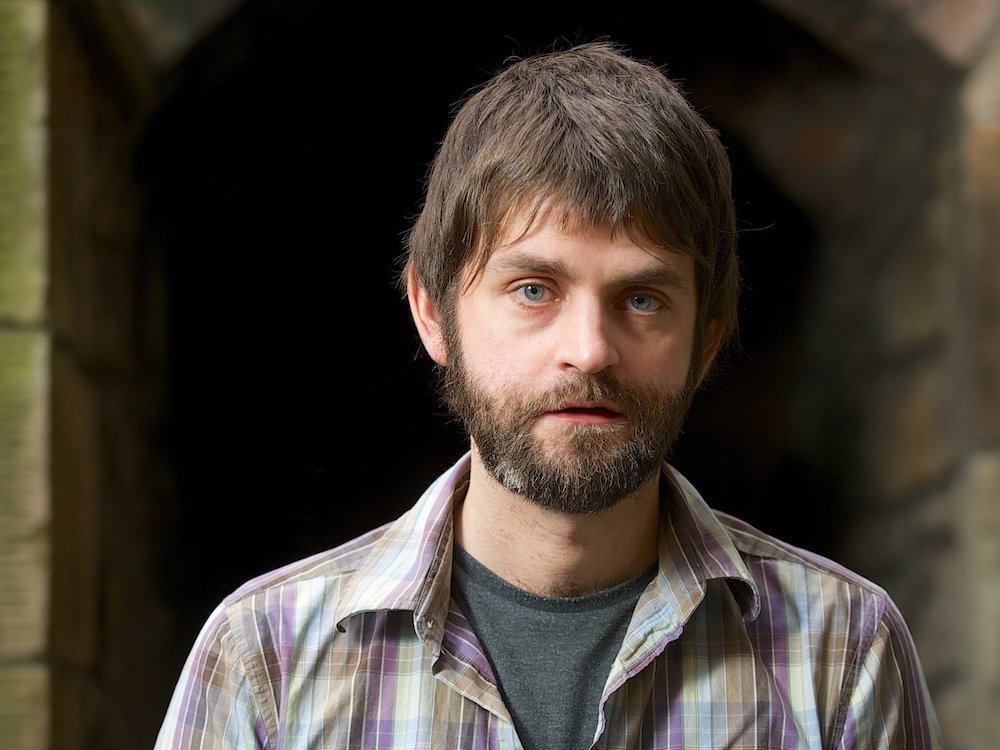Becka Mara McKay once asked me to make a list of things one would never find in a poem, the lesson being that an exploration of lawn mower parts or the muscles used while bowling or natural marble patterns might yield some wonderful language, and if we’re not putting wonderful language in poetry, then where will all this wonderful language end up? A lot of wonderful language has found its way into McKay’s latest collection, The Little Book of No Consolation, which is structured around seldom-used terms such as scorse, inhabitiveness, wood-want, and donkey’s breakfast. In “from the Dictionary of Misremembered English” she writes, “I can only bless you once, says the Angel / of Syntax, who believes we are born among / words the way birds are born among wings.” These poems investigate the layered intricacies of language itself as much as they plumb the depths of their subject matters, which tend toward the intersection of the animal, the translatable, and the mysteries of faith, locked together like calcite crystals in mizzi stone, expertly sawn, sanded, and polished to a mirror finish. —Christopher Notarnicola
The music of the now ninety-seven-year-old Emahoy Tsegué-Maryam Guèbrou, some of which is captured on the compilation Éthiopiques 21: Ethiopia Song (Piano Solo), feels light but not frivolous—like floating on a very deep ocean. Despite the wimple she wears on the cover of Éthiopiques 21, I didn’t know she was a nun until recently, when I came across the BBC Radio 4 documentary “The Honky Tonk Nun.” That the music is supported by deep spiritual devotion is no surprise. While honky-tonk isn’t mentioned in the radio piece (and is not a descriptor I’d apply to Guebrou’s work), sixth-century liturgical chants, Western classical, and Ethiopian pop are. Born into privilege and classically trained in Switzerland and Cairo, Guebrou was living in Addis Ababa before something “broke my music life,” as she says in the documentary, and she left for a mountain monastery to become a nun. In her life story and under her fingers, seemingly disparate currents meet. It is difficult to find her records these days, but Éthiopiques 21 is on Spotify. Thank god. —Jane Breakell
I adore the work of the Korean director Hong Sang-soo, whose films have sometimes been compared to those of Éric Rohmer, and Hong’s latest, The Woman Who Ran, is no exception. Starring his frequent collaborator Kim Minhee as Gamhee, a seemingly content married woman, The Woman Who Ran is a film about crossroads and the taut, tense moments of contemplation that occur before a major life decision. The plot is simple: Gamhee visits three female friends—two on purpose, one by accident—and discusses her relationship with her husband; over the course of the film, it becomes clear that she is thinking of leaving him. In the five years of their marriage, she is quick to point out, she and her husband have—until now—never spent a day apart. Her friends are uneasy when they hear this, and each of them—a divorced woman now living with another woman who is referred to only as a “roommate,” though there are hints of intimacy beyond that; a single woman caught up in many complicated love affairs, including one with a very young poet and another with a not-quite-divorced architect; and an old friend from Gamhee’s past now married to a famous writer who himself may also once have had a relationship with Gamhee—seem to offer an example of the independence that is missing from Gamhee’s life. Gamhee lodges no major complaints over the course of this movie, no major decisions are made, and yet this is a film that feels like holding one’s breath: though it’s not clear what exact shape her decision will take, it is obvious that an unstoppable force is now making its way toward an immovable object—action will occur. For those of us living in New York, The Woman Who Ran is currently playing at Lincoln Center. —Rhian Sasseen
The topic of the female antihero came up recently in a discussion I was having over a game of pool (where else?). The subject is vast, but I encountered last night a remarkable species of the genus in Chloe Wilson’s short story “Hold Your Fire,” which appears in the most recent issue of Granta. An engineer for a military arms dealer feeds her general state of low-grade rage with resentment of her milquetoast, IBS-riddled husband and fierce protection of her son (whom she also sort of resents) against the powers that be at his sensitive, alternative-style private day care. Like all the best antiheroes, her charm comes from our realization that she is a bad person, unworthy of sympathy, and yet … by the story’s twisted, triumphant ending, she’s somehow won it anyway. —Lauren Kane
For reasons that aren’t clear to me, Martin MacInnes’s Infinite Ground has sat undisturbed on my bookcase since its publication five years ago. It was recommended to me by a pal whose taste I trust, and was reviewed very favorably at the time of publication, but I failed to pick it up until this week. Framed as a missing-person noir set in Latin America, the book follows a nameless detective through a nameless city as he hunts for Carlos, a young man who disappeared in the middle of a family gathering. An actor gives evidence to the detective in place of the missing man’s mother—she is too distressed to talk. Many more actors take the place of the missing man’s colleagues—they are considered by the employer more authentic, more efficient than the workers themselves. Minute biological evidence of the missing man is everywhere, and forensic investigation reveals he had an infection not only of his skin but of his thoughts: “His gut fermented anxiety, paranoia.” Nature hums in the background and air, but while unreality spirals in all directions, everything is presented as fact. Drawing comparisons to works by Jorge Luis Borges, Vladimir Nabokov, Angela Carter, and J. G. Ballard, it’s a bonkers wee book. Such fun. —Robin Jones
from The Paris Review https://ift.tt/3eKWTJJ



Comments
Post a Comment